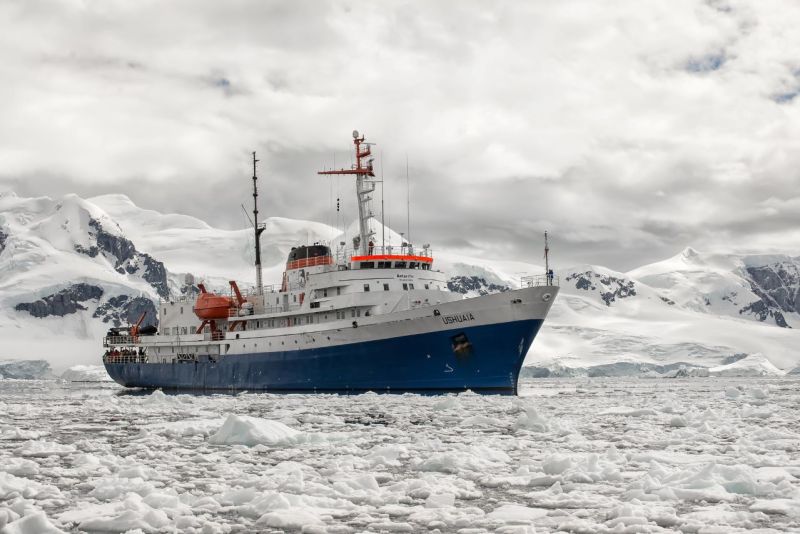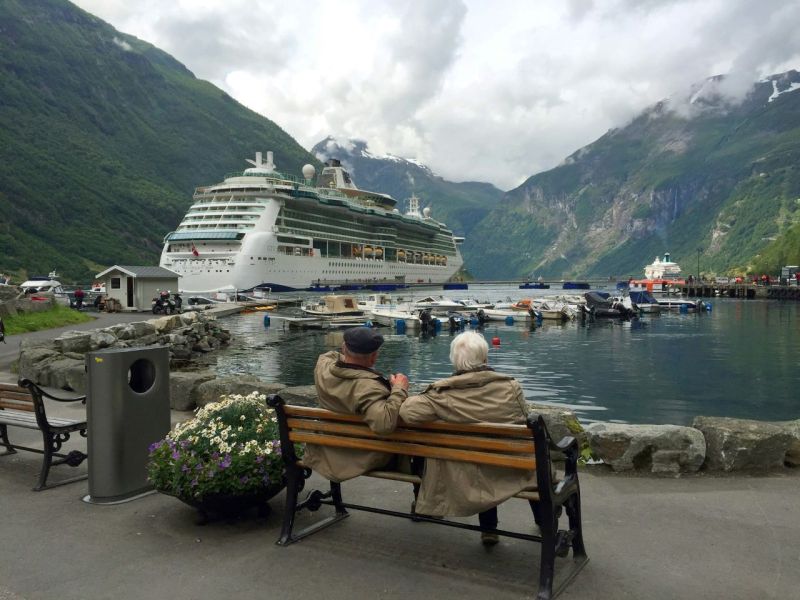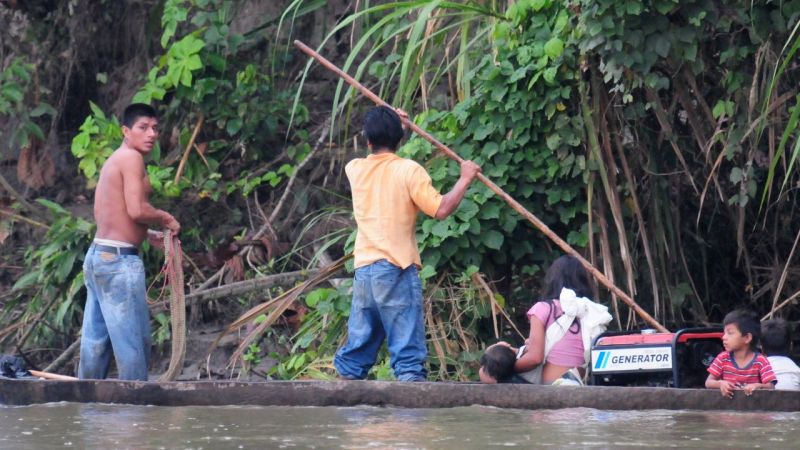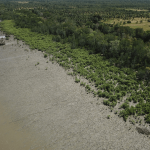International tourism is booming. By the end of 2024, it’s expected to recover to pre-pandemic levels – reaching an estimated 1.4 billion arrivals and USD 1.5 trillion in value.
But as the industry soars and expands to ever more remote destinations, so do its risks to local communities, ecosystems and the climate.
To take just one example, much of its water consumption is concentrated in water-stressed regions, where visitors can consume up to three times more water than residents – competing with local people and natural systems over a vital resource.
So, what could this astronomical rise in tourist numbers mean for major destinations, and how can the industry ensure that it contributes to – rather than detracts from – the very natural and cultural landscapes that visitors set out to experience?
From the depths of the Brazilian Amazon to the frigid wilderness of Antarctica and the bustling cruise ports of the Mediterranean, here’s the state of sustainable tourism today.
Antarctica: Last chance tourism
One of the planet’s last great wildernesses is also home to some of its most fragile ecosystems. In Antarctica, environmental conditions are so harsh that plants can take a decade to recover from just a single footprint.
Yet the continent received more than 100,000 tourists last year – roughly 40 percent more than before the COVID-19 pandemic.
A tantalizing, if hushed, allure of Antarctic travel is the desire to see a place before it’s gone, even if that means speeding up its disappearance – a phenomenon known as ‘last chance tourism.’
Many are looking to capitalize on this melting global common.
New cruises are taking to sea, travel agencies are hustling to add capacity, and sightseers are flying in to skip long days of navigation across the notoriously rough seas of the Drake Passage.
Tourists who once took in the view from the deck of a ship are now offered to trek, kayak, hop on trucks, drive snowmobiles, feast on imported gourmet meals and call it a day in luxury sleeping domes overlooking emperor penguin colonies.
What’s more, tourism is concentrated in the 1 percent of Antarctica that’s ice-free, which is also where much of its biodiversity is located.
“It is very important that tourism in this relatively small area is managed appropriately,” says Claire Christian, director of the Antarctic and Southern Ocean Coalition (ASOC).
Christian points out that there is no science-based regulatory framework in place to protect the ecosystem from human impacts.
“For example, there are no rules for landing visitors at previously unvisited sites, meaning that the footprint of tourism can expand without oversight.”

One major risk is unregulated pollution from ships, which are discharging sewage in Antarctic waters and emitting vast amounts of black carbon, or soot, which accelerates the melting of ice and snow.
Another threat is the introduction of potentially invasive species, like barnacles and algae fouling the hulls of ships, or plants and insects inadvertently brought in by tourists.
These vessels are also a major source of noise pollution, which can interfere with sound-sensitive species like whales. Similarly, the very presence or tourists can stress penguins to the point of potentially altering their reproductive cycles.
“Antarctica is one of the world’s last great wildernesses, and it should be preserved for all humanity,” says Christian, who notes that this lack of regulation stems from the fact that the continent doesn’t belong to any single country.
“Now, there is an opportunity to prevent negative impacts from tourism rather than wait until they occur to make new rules in response.”
The responsibility of regulating tourism and protecting the Antarctic environment befalls the Antarctic Treaty Consultative Meeting (ATCM) – a group of 57 countries committed to protecting the seventh continent as a place for research and peace.
Experts at ASOC believe the ATCM should start by designating additional protected areas that are off limits to tourism and writing more comprehensive and binding rules for visitors, including limits on new and existing sites.
Other urgent measures include better monitoring the impacts of tourism to inform new regulations, enhancing oversight, and instituting a fee for visitors to fund compliance mechanisms and research.
Finally, ASOC also calls for a ban on permanent infrastructure for tourists and restrictions on the kinds of activities they can engage in, as well as limits on ship-based pollution to protect Antarctica for current and future generations.

Can cruise ships be sustainable?
At milder latitudes, cruise ships are a growing cause for concern.
“Cruise ships are incredibly polluting, and the industry keeps growing,” says Inesa Ulichina, sustainable shipping officer at the European nonprofit T&E, which advocates for clean transport and energy.
Take the MSC Grandiosa as an example: in 2023 alone, it emitted as much carbon dioxide as 68,000 cars, making it the most polluting cruise ship in European ports.
A recent T&E study found that the number of cruise ships, the time they spend around ports, and their fuel consumption have all increased by nearly a quarter since the pandemic.
In Barcelona, the most polluted cruise port in Europe, vessels emit more than twice as much sulfur oxide as all of the city’s cars combined.
Venice slashed such emissions by 80 percent by banning large cruise ships, but the problem has just moved to nearby ports such as Ravenna.
Pollution from cruise ships contributes to respiratory and cardiovascular diseases, water pollution and acid rain. This can in turn contaminate fish – which then end up our plates. In April, Denmark banned vessels from discharging pollutants into its waters.
One way to tackle pollution from ships could be to use cleaner fuels, but there’s a catch.
“Shifting to liquefied natural gas (LNG) as fuel partly solves the problems of pollution but has dramatic consequences for the climate,” says Ulichina, who points out that methane leaks often occur throughout the LNG supply chain, as well as in cruise ships.
That’s because methane traps 80 times more heat than carbon dioxide and stays in the atmosphere for 20 years after it’s released.
Ulichina estimates that one of the biggest cruise ships running on LNG emits as much methane each year as 10,500 cows.
So, what needs to change to reduce the impact of cruise ships on people and the environment?
T&E believe cruise ships must switch to fuels produced from renewable electricity or based on green hydrogen. Notably, cruise line Viking is pioneering the use of liquefied hydrogen in its ships.
Another priority is to electrify docks so that vessels stop their engines when in port – a cost that activists say should be paid for by cruise ship companies rather than taxpayers.
In Europe, it will be compulsory for large passenger ships to be connected to shoreside electricity by 2030.
A simpler yet effective solution is for cruise ships to sail more slowly: by reducing speed by 10 percent, they could reduce fuel burn by 19 percent.
But perhaps, beyond relying on techno-fixes, the onus is also on travelers to find greener ways to travel than on a floating leisure park packed with casinos, cinemas, swimming pools and all-day buffets.

Sustainable tourism is possible – but there’s a catch
In the deepest depths of the Brazilian Amazon, recreational fishing outlets have been penetrating ever more remote rivers in search of the next big trophy for wealthy international visitors.
In the process, these outlets have invaded the ancestral lands of Indigenous Peoples – depleting their fisheries, jeopardizing food security, dividing communities and opening the door to social ills like child prostitution and drugs.
Anthropologist and consultant Camila Sobral Barra has devoted the past decade to supporting Indigenous communities in taking sustainable tourism into their own hands.
Her work is based on principles of self-determination, self-sufficiency and sustainability in multiple dimensions: environmental, social, cultural and economic.
“The best possible nature conservation strategy is having communities live well and according to their cultures, in their ancestral territories,” says Sobral.
In the Amazon, where transportation relies heavily on boats powered by some of the most expensive fuel in the country, it can cost thousands of dollars to send remote communities to a meeting point to hold consultations.
In this context, community-led initiatives face higher costs than foreign-run operations that have little regard for people and the environment, and communities face the challenge of creating and marketing a sound business plan.
But fishing and experiential tourism can still have a role to play in helping them develop, share their culture and manage their resources sustainably – if done well.
“It is crucial that communities be organized and willing to reach compromises on issues like natural resource management and benefit sharing – otherwise, disputes will soon arise,” says Sobral.
But as a traveler, how exactly can you identify a truly community-led initiative? Sobral suggests looking for specifics, like the name of the community and the local Indigenous organization that oversees the venture.
“Generally speaking, a responsible tourist is an informed tourist – one who actively seeks to learn about a destination and the potential impacts, both positive and negative, their presence may have,” she concludes.
The post Can tourism be sustainable? appeared first on #ThinkLandscape.




